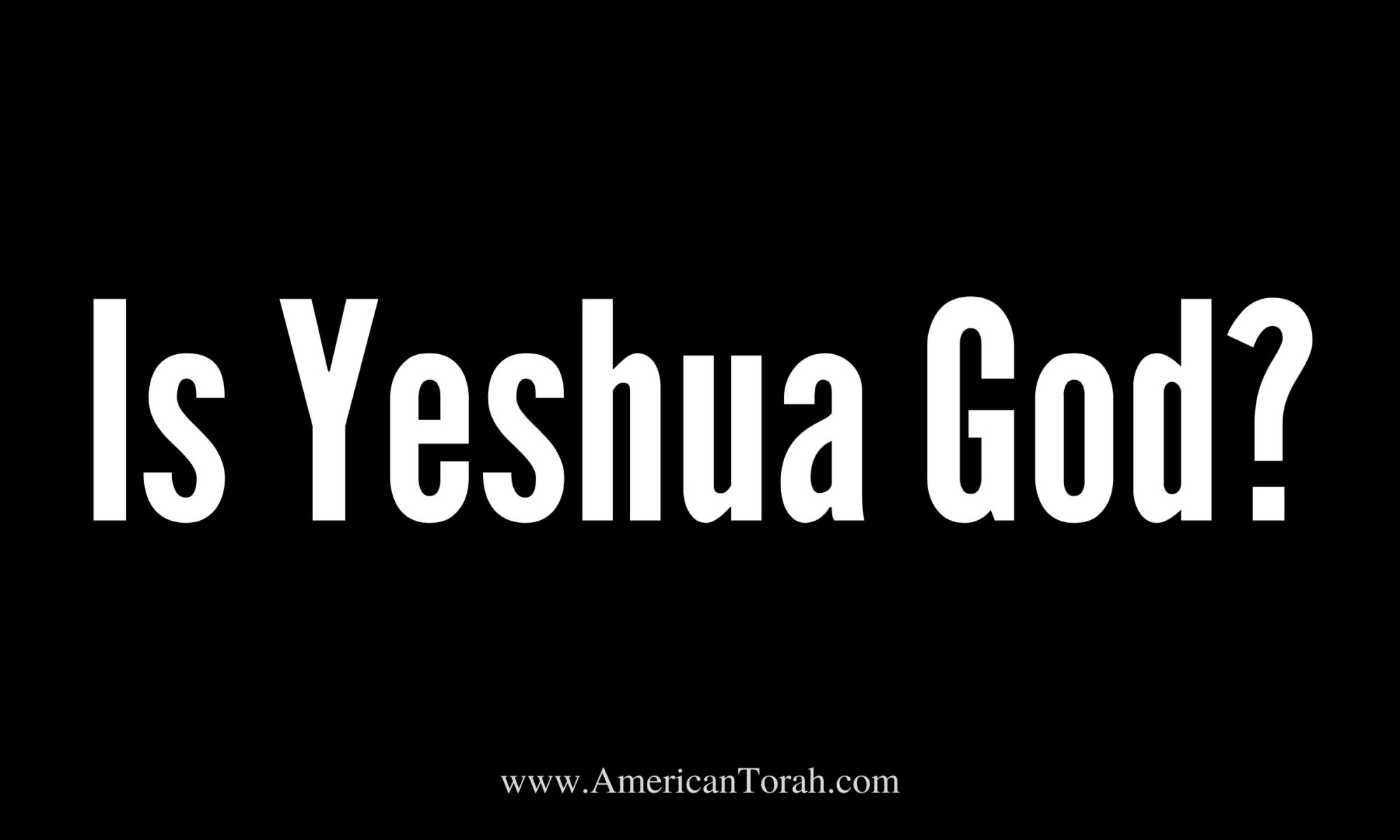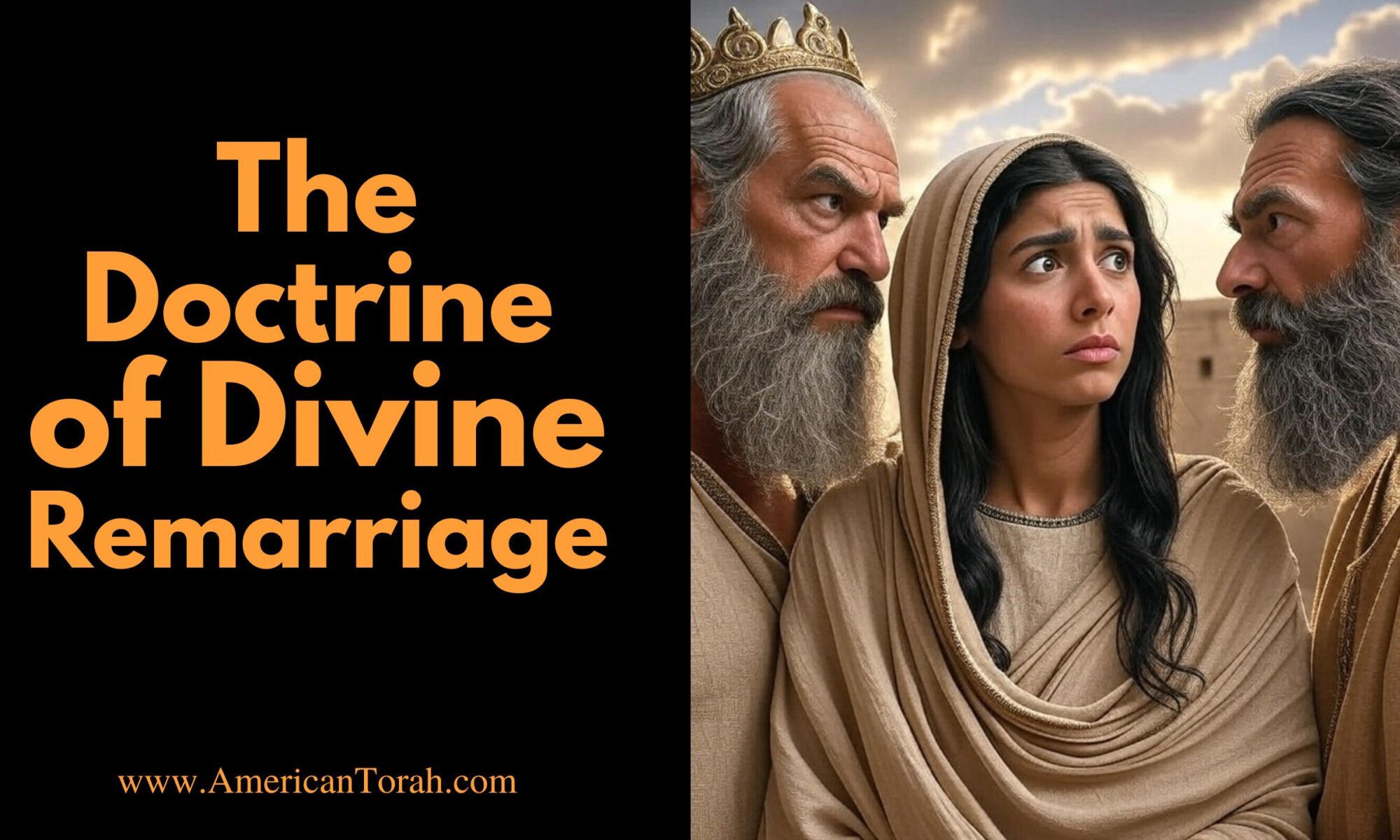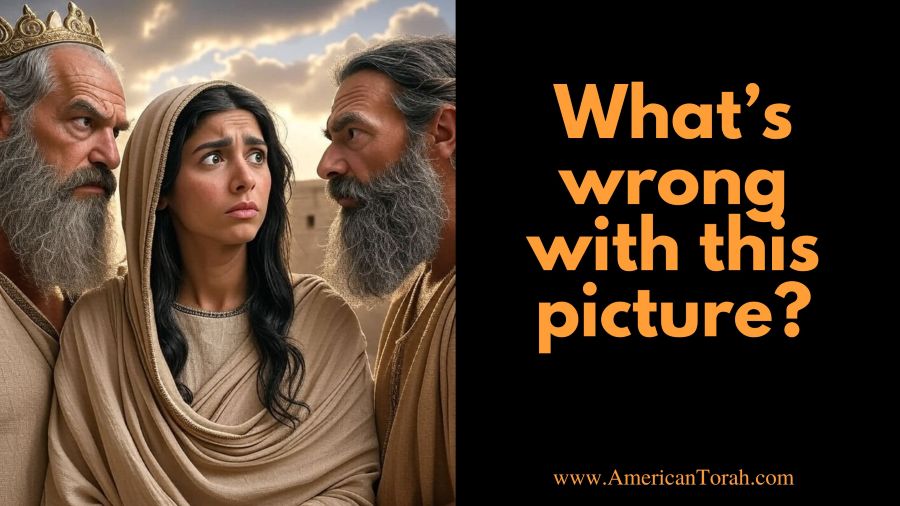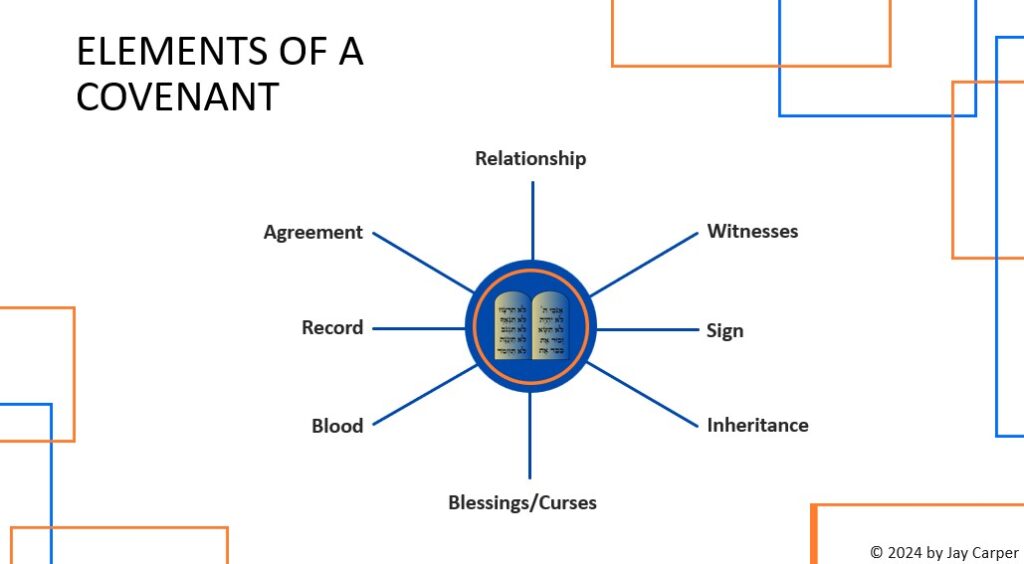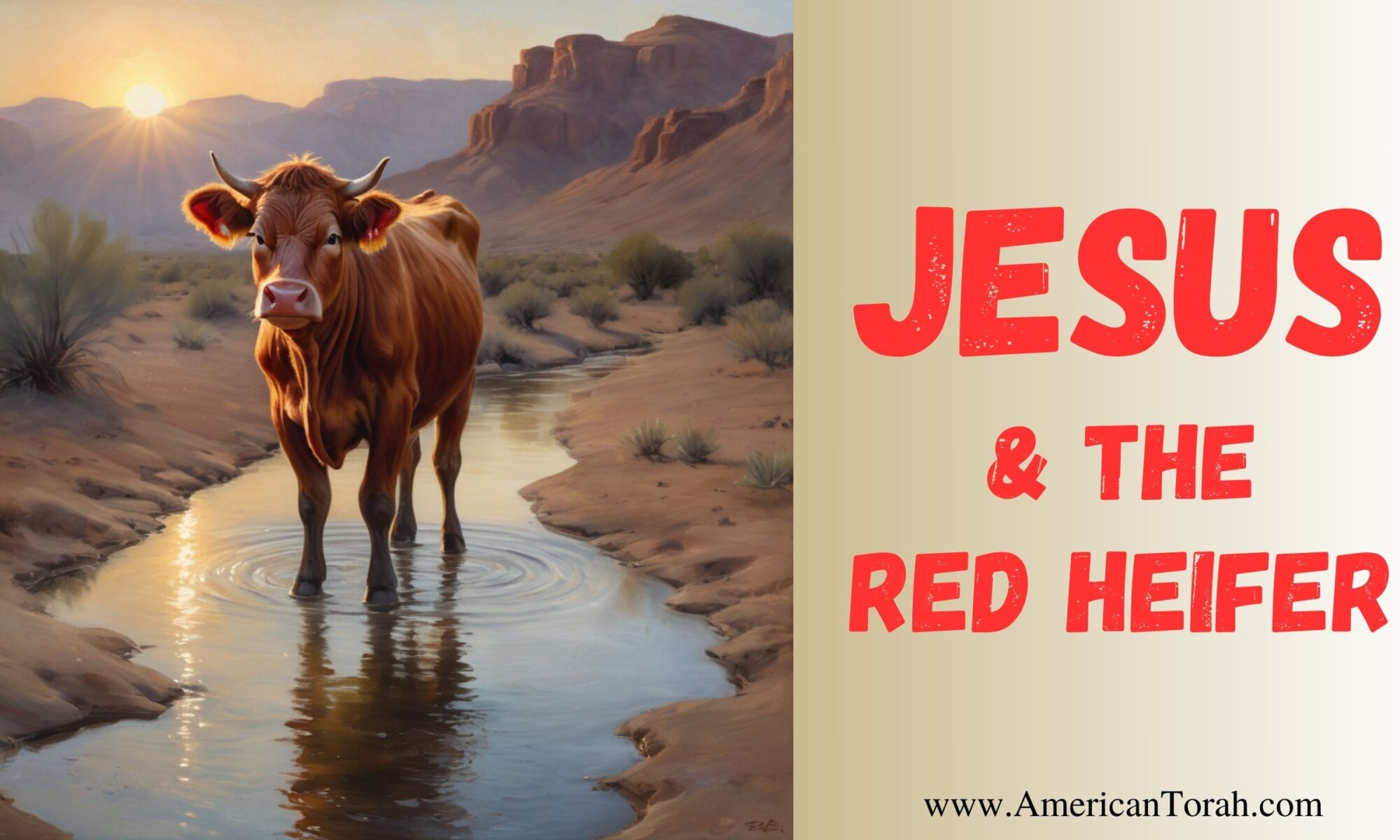(All Bible quotes are from the Tree of Life Version unless otherwise specified.)
The divinity of Yeshua (aka Jesus) is yet another question that people have been arguing about since before Calvary, so I’m going to break it down into three sub-questions:
- Did Yeshua exist before he was conceived in Mary?
- Is Yeshua separate from the Father and the Holy Spirit?
- Is Yeshua YHWH?
Did Yeshua Exist Before He Was Conceived in Mary?
Yes, he did.
- John 1:1-14
- John 8:58
- Colossians 1:15-17
The obvious supporting passage is John 1:1-14, which says in part, “In the beginning was the Word. The Word was with God, and the Word was God. He was with God in the beginning….And the Word became flesh and tabernacled among us….”
Some will interpret this to mean that the word is God’s promise to send a Messiah and that Yeshua is the manifestation of that promise. In this view, only the word/promise pre-existed the incarnation. In my opinion, this would only work if one gets very creative with the phrase “He was with God in the beginning” and ignores v3, which says “All things were made through him, and apart from him nothing was made that has come into being.” One could argue that “him” in v3 is referring to God, not Yeshua, but the much more natural reading is that this refers to Yeshua.
Yeshua himself appeals to his pre-existence in John 8:58 when he told the Jewish religious leaders, “Before Abraham was, I am,” in response to their asking if he had personally seen Abraham. Whether you translate ego eimi as “I am” or “I was”, it’s difficult to explain this away.
In Colossians 1:15-17, Paul reiterated John 1, when he called Yeshua “the firstborn of all creation”:
He is the image of the invisible God, the firstborn of all creation. For by Him all things were created—in heaven and on earth, the seen and the unseen, whether thrones or angelic powers or rulers or authorities. All was created through Him and for Him. He exists before everything, and in Him all holds together.
Colossians 1:15-17
Although it seems to me that it doesn’t get much clearer than “He exists before everything”, some will explain this away to mean that he is preeminent, “before” everything in rank, not in time. Again, I think this is taking unwarranted creative liberties and ignoring the rest of the text: “All was created through him”.
Is Yeshua Separate from the Father and the Holy Spirit?
That depends on what you mean by “separate”. Yeshua certainly acts independently from both Father and Spirit, as can be seen from numerous passages, yet he is also unified with them. I’ll leave the exact nature of that unity to the next section.
- Matthew 3:16-17
- Matthew 10:32-33
- John 14:26
After being baptized by John in Matthew 3, Yeshua is still standing in the water when the Holy Spirit visibly descended from heaven to rest on him, and a voice came from the sky saying “This is my son, whom I love; with him I am well pleased.” I don’t see any reasonable way to interpret this scene except as Father, Son, and Spirit all present and perceived by those present as separate beings.
Yeshua also made numerous statements that I don’t think can be interpreted in any other way. For example, in Matthew 10:32-33, he said that he will acknowledge or deny people to the Father based on how faithful they are to him, Yeshua. This only makes sense if the Son and Father are able to act independently from one another and interact with each other.
At another time in John 14:26, Yeshua said that once he has gone, the Father will send the Holy Spirit to teach the disciples. This would be nonsensical if Father, Son, and Spirit weren’t at least semi-autonomous entities.
So now we see that Yeshua existed before his conception in Mary, but also that the Father, Son (Yeshua), and Spirit act and manifest separately from one another. One might conclude at this point that if the Father is God, then Yeshua can’t be, since there is only one God, but that would be a non-sequitur. There are many examples in the world of a single living being also being multiple, semi-autonomous beings. I’ll come back to this idea later in the article.
Is Yeshua YHWH?
This is the heart of the matter, and although Scripture doesn’t state it in simple terms, the collective witness of all the prophets seems to be clear: Yeshua is God.
- John 1:14,17-18
- Colossians 1:15-17
- Revelation 1:8, 21:6, 22:13
I want to point out a couple more things in John 1. First, verse 14 says “the Word became flesh and tabernacled (skenoo) among us”. This is a clear reference back to YHWH tabernacling among his people in the Wilderness and forward to YHWH again tabernacling with his people at the end of the age. See Exodus 25:8 in which God said, “Have them make a sanctuary for me, so that I may dwell among them,” and Revelation 21:3 in which a voice from God’s throne in heaven says, “The dwelling of God is among men, and he shall tabernacle among them.”
Second, verses 17-18 say that Yeshua revealed the grace and truth of God, adding “the one and only God [monogenēs theos], in the Father’s embrace, has made him [God] known.” The KJV says “the only begotten son [monogenēs huios], which is in the bosom of the Father”, but this is based on 5th century Byzantine manuscripts, while the TLV, ESV, and other more recent translations are based on a much older, 3rd century and 4th century manuscripts that are considered more reliable by almost all New Testament scholars.
The older reading is nonsensical unless you admit that John was saying Yeshua is God. To paraphrase, “No one had ever clearly seen God until the one and only God, in the person of the Son sent from the Father, revealed him to us.”
Paul did something similar in Colossians 1:15-17 (also previously referenced) when he wrote that Yeshua makes the invisible God visible, is the firstborn of all creation, and also created all things. Allow me to break down two points in this passage.
“Firstborn” in this context is a role, not a description of how or when he came to exist. He wasn’t the first being created, because all things were created by him, and how can he create himself? No, he is the Firstborn because he is the Father’s agent in the world, the family priest of all creation, and the Kinsman Redeemer of God’s people.
Exodus 20:11 says that YHWH “made heaven and earth, the sea, and all that is in them”, yet here Paul wrote that everything was created through and for Yeshua. This might give someone a little wiggle room to say, “YHWH created Yeshua first and then used Yeshua to create everything else,” but verse 17 says “in him all holds together”, meaning that he sustains all of Creation. In both Hebrew and Greek thought, this is an attribute of the supreme Creator God. See Psalm 104:27-30, Nehemiah 9:6, Isaiah 40:26, and Acts 17:28.
John 1 and Colossians 1 together make a strong argument for the divinity of Yeshua, but still some people will explain them away, saying “That word or phrase doesn’t mean what you think it means”, or something like that. However, the combined testimony of Revelation chapters 1, 21, and 22 are much more difficult to overcome.
Immediately after saying that Yeshua is coming with the clouds, in Revelation 1:8, John quotes YHWH Elohim as saying, “I am the Alpha and the Omega, who is and who was and who is to come, the Almighty!” That sounds to me like John is putting those words in the mouth of Yeshua, but he doesn’t say that explicitly. It could be that the Father is pronouncing those words as Yeshua descends. However, in verses 17-18 of the same chapter, Yeshua clearly identifies himself as the one who died and arose, and says “I am the First and the Last,” echoing the words of YHWH in Isaiah 41:4, “I, Adonai, am the first and the last, I am he!”
Later, in Revelation 21:6, the one seated on the throne declares “I am the Alpha and the Omega, the Beginning and the End.” Clearly this must be the same YHWH Elohim quoted in chapter 1, although he also appears to be the same as the voice who declares v3 that “God Himself shall be among them and be their God”. Then in Revelation 22:13, someone says, “I am the Alpha and the Omega, the First and the Last, the Beginning and the End”, and the same voice appears to continue in verse 16 with “I, Yeshua, have sent my angel to testify these things to you for my communities.”
YHWH Elohim is the Alpha and the Omega, the First and the Last. YHWH is the creator of all things.
Yeshua is the Alpha and the Omega, the First and the Last. Yeshua is the creator of all things.
I readily admit that these passages can be ambiguous when read in isolation from the rest of Scripture–especially Revelation 22, which seems to switch back and forth between speakers without identifying them–and nowhere does the Bible say in plain, unambiguous language that Yeshua is YHWH. I think reasonable people can come to different conclusions, especially if they really want to. However, the evidence seems overwhelming to me that Yeshua is God.
There are many other passages that I could use to support each of these three points. I didn’t even choose the strongest ones in some cases, because you’ve probably already seen those in relation to this discussion. Some of those passages just become contradictory or nonsensical double-speak if Yeshua isn’t God.
How Can the Son of God Also Be God?
But how can Yeshua be God if he prays to God? Why does Paul frequently write of “God and Jesus”? I think it’s important to understand that the Bible was written by real people to real people. They wrote in the language of their day, and were sometimes loose in their terminology. They quite reasonably didn’t feel the need to explain things that they expected their intended audiences to already understand. For example, when Paul wrote of “God”, he usually meant the Father in his authoritative capacity, as opposed to the Son in his executive capacity. The Father defines the mission and assigns tasks, while the Son and the Spirit carry them out.
At first, the concept of Father, Son, and Spirit all being separate entities and also all being the one God YHWH can be difficult to grasp, but it shouldn’t be. I alluded to this earlier, but think about this some more: Our world is full of singular living beings that are made up of numerous subcomponents that are living beings in their own right. You, a human being, are made up of dozens of organs, all of which act more or less autonomously from your conscious mind, and all of which can even sustain life for a season if separated from you. Your organs are further made up of billions of smaller organisms, all working in concert, but also semi-autonomous and each with life in itself.
A doctor can extract blood, bone, or skin cells from your body and they will continue to live for some time without being attached to you. You can reach out your hand and pick up a book and feel the texture of the cover. Your fingers know how to open it and turn the pages without you having to give them any conscious instructions. They send messages back to your brain, which processes the signals and responds with instructions. Every part of your body is in constant communication with every other part–especially your brain–while acting without a constant micromanaging supervision.
You are made in the image of God. Why shouldn’t you function in his image also?
Your brain acts in an authoritative capacity like the Father, while your hand or your eye or your foot acts in an executive capacity like the Son. Your hand is you and your foot is you, but are your hand and your foot YOU?
If I speak of you, I am likely speaking of the totality of you as a separate person, but I might also be speaking of your conscious mind. “What do you think? What do you want to do? What have you decided to do?” Every cell taken from your body is you because it is part of your body and contains your DNA, yet the cell by itself isn’t you.
I’m not saying that Yeshua is literally a hand or foot of God. I’m using your anatomy as an analogy of God’s (for lack of a better term) because the analogy should be obvious. Nobody is confused by this apparent contradiction when we talk about a human body or a tree or a fish compared to its component parts, because there is no real contradiction. The only real problem is in the limitations of human language. So why are we so confused by the same apparent contradiction when we talk about YHWH?
The Son is not the Father and the Father is not the Spirit any more than your hand is your foot or your foot is your brain. Yet Son, Father, and Spirit are all equally YHWH, just as much as your hand, foot, and brain are equally you.
As you can probably guess from this analogy, I think the Sunday School version of the Trinity that most people are taught is simplistic. The co-equal Godhead of the Trinity is to divine anatomy what head, trunk and limbs are to human anatomy. We are more complicated than that, and so is God.
He hasn’t described much detail about his internal functioning, probably because we wouldn’t understand it if he did, but also because we don’t need to know. He has laid some things out, hinted at some, and kept silent about others, and I think we need to leave it at that. I don’t think we have a right to tell anyone, “You must believe in my explanation of the Trinity or you’re damned to hell!” If it was really that necessary to our salvation, I am confident that God would have explained it in much plainer language.
My real goal in writing this article isn’t to tell you what you must believe about God, but to lay out a reasonable argument for something that is more ore less Trinitarianism. If you don’t like it or agree with it, I’m not offended at the least. Just don’t ever say that it’s absurd or illogical, because that really would be absurd and illogical.
I like to put doctrines into one of four categories:
- Exclusionary – We aren’t in the same kingdom.
- Discordant – I’m not necessarily doubting your salvation, but we might have a problem fellowshipping.
- Divergent – It’s not a threat to your salvation, and we can fellowship, but we probably can’t be ministry partners.
- Academic – I disagree, but it’s not a big deal.
The belief that Yeshua was just a man is in the Exclusionary category. If you don’t believe that Yeshua was the only Son of God conceived in the virgin Mary, then you aren’t a Christian (or a member of the Way or whatever term you prefer), but that’s not quite the same thing as not believing in the Trinity.
In my opinion, accepting that Yeshua is YHWH is critical to understanding much of the rest of Scripture. There are many passages that I can’t discuss in depth without referencing that belief. Denying his divinity while still accepting that he is the “only begotten Son”, above all angels, and existing before all of heaven and earth is in the Discordant category. If a person can hear and understand what I’m saying when the topic comes up without making it an issue, then we could probably have good fellowship. If it becomes a point of contention, then probably not.
I don’t believe that understanding the structure of God is a necessary prerequisite to trusting in him for forgiveness and being faithful to him. However, whether we can fellowship at this level is up to you.


